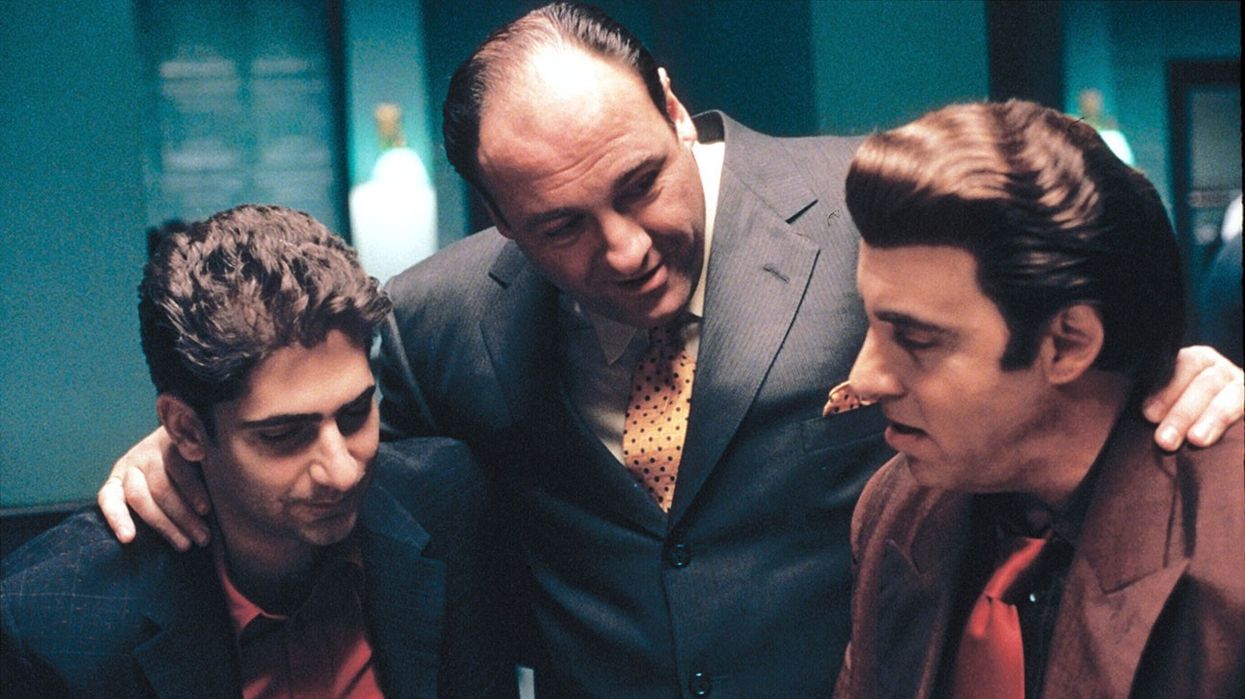Remember When 'The Sopranos' Ushered in the Cinematic Aesthetic on Television?
TV used to be about pointing and shooting, until The Sopranos came along.

The late 90s and early 2000s saw a change in television. We entered the start of another golden era, where complicated characters, darker narratives, and arresting visuals were allowed to come to the small screen and change the way we watched. It's fitting that HBO spearheaded this shift, with its slogan, "It's not TV, it's HBO," which wound up defining the new era.
Perhaps the most popular and most influential title to premiere on the network at the time was The Sopranos, a show about a hardened gangster with a family, a new therapist, and a soft spot for the ducks in his backyard.
Outside of the groundbreaking content and deconstruction of the gangster genre, the show changed the way we viewed cinematography on television. It took away the standard angles and instead felt much more cinematic. Like we were watching an hour-long gangster film each week.
Check out the video from The Beauty Of about the cinematic shots from The Sopranos, and let's talk after the jump.
Remember When The Sopranos Ushered in the Cinematic Aesthetic on Television?
Series creator David Chase was someone who worked on many network shows like The Rockford Files before he changed the landscape of TV with his ornery New Jersey family. He wanted to explore a character that felt like they could never be seen on TV. A ruthless villain who was out of shape and had anger issues, but found some vulnerability in his mind.
The basis for the cinematic language of The Sopranos lies within the genre. We get specific allusions to things like The Godfather, White Heat, and Goodfellas, as well as The Public Enemy. But it's not direct homage, it's a pastiche of these projects, allowing the show to make a play on Tony's relationship with his mother and even the backroom scenes that made The Godfather so famous.
To make the series come to life, he worked with directors of photography Phil Abraham, Alik Sakharov, and William Coleman to certify certain aesthetics and homages to the great gangster pieces from the past. Together, they shaped different seasons and shots to make the entire series feel cohesive and singular.
There were dozens of iconic episode directors across the series, like Timothy Van Patten, John Patterson, Allen Coulter, Alan Taylor, Henry Bronchtein, Jack Bender, Steve Buscemi, Daniel Attias, David Chase, Nick Gomez, Matthew Penn, Lorraine Senna, Andy Wolk, Martin Bruestle, Lee Tamahori, James Hayman, Peter Bogdanovich, Mike Figgis, Rodrigo García, Danny Leiner, David Nutter, Steve Shill, Phil Abraham, and Terence Winter.
All of them had to work within the aesthetic established, but they were also given some leeway to experiment and even to shoot callbacks from previous episodes. Little did they know the effort they were putting in would change TV for all time. Now, people want to see shows that have a cinematic quality. Audiences want to feel like budget and value are extended to every episode in every season. They want to see shows take chances on angles, edits, and movement.
One of the things I most admired about the show was its use of patterns. Showing Tony sitting and looking at something, versus Carmela. Or shooting him from an aerial shot and repeating that later. There were also so many slow dollies in and out, taking us into someone's life, and when they got whacked, out of it. We also did a lot of close-ups on eyes. The show opens that way and closes that way, with Tony facing fate.
Altogether, this cinematography changed the way we viewed television. It could be something more than we expected. And every show after had to address how they could continue on in the cinematic tradition as well.
What are some of your favorite shots from the TV series? Let us know in the comments.
Source: The Beauty Of











